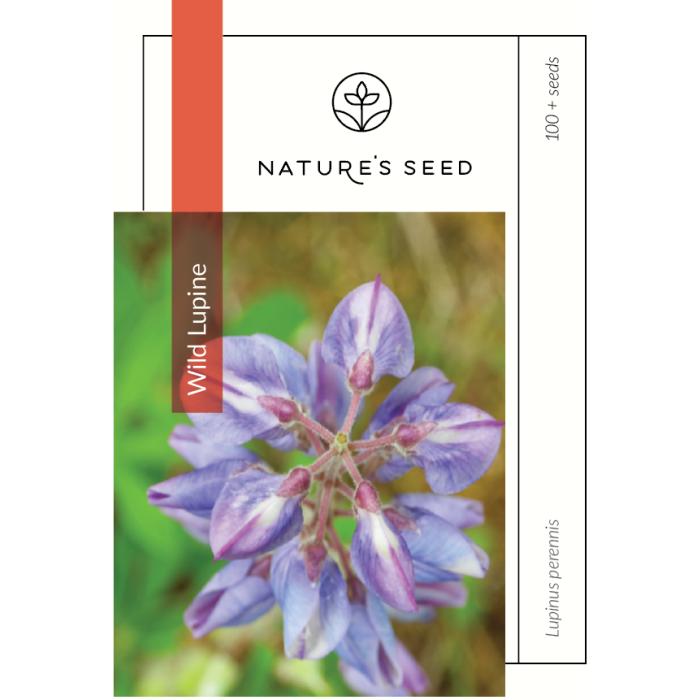Wild Lupine
- Premium Quality
- Custom Tailored
- Expert Guidance
Growing Region:

Sun/Shade:

Germination Rate:
Normal
Texture:
N/A
Height:
12" - 48"
Uses:
N/A
Colors:
Dark Blue Medium Blue Light Blue Dark Purple Medium Purple Light Purple
Water:

Native to US:
Yes
Life Form:
Perennial
Product Specifications:
Seeding Rate: 43 lbs. / Acre
Scientific Name: Lupinus perennis
Each packet contains approximately 100 seeds.
Description:Wild Lupine is a native perennial wildflower that tends to grow in a distinctly upright growth, producing a one to three-foot pillar of beautiful purple and blue blossoms.
Also named "sundial lupine" or "perennial lupine," its scientific name isLupinus perennis. It is in the bean and pea family of plants, such as chickpea, acacia, green bean, and wisteria plants.
Planting Conditions:
- Wild Lupine prefers well-drained soils, such as coarse, dry sandy soils.
- It thrives in slightly acidic or neutral soil, with a pH range of 6.0 to 7.5.
- It also prefers full sun exposure or light partial shade. It requires several hours of direct sunlight each day for optimal growth.
- Wild Lupine is a hardy plant, tolerating cool temperatures and growing best in USDA zones 4 to 8.
- To provide enough room for multiple Wild Lupinus perennis seeds to grow, provide at least 12 to 18 inches of space when planting seed pods or grown Wild Lupin plants.
- Wild Lupines are often low-maintenance, with the ability to self-seed, but can benefit from removing dead flowers.
- To avoid fungal diseases such as powdery mildew, make sure your Wild Lupines aren't planted in an area with too little air circulation or too wet. Also, check for aphids, slugs, and snails, which can be attracted to them in certain environments.
- For planting companion plants, consider native-range plants and grasses that prefer similar soil and light conditions.
- To properly mulch a bed of wild lupines, be sure to prevent too much mulch from making direct contact with their stem in order to prevent rot.
FAQs About Our Wild Lupine Seeds
When is the Best Time to Plant Wild Lupine seeds?
The best time to plant your wild lupinus perennis seeds would be during the late fall season, as the cooler climate allows seeds to stratify more naturally. However, for warmer climates, seeds can be planted in early spring.
Do You Need to Pretreat Wild Lupine Seeds Before Planting Them?
Wild Lupine seed pods can benefit from pretreating, specifically from a process called scarification, in which you lightly sand or nick the seed coat to ensure water can penetrate into it so it can more easily begin its germination cycle. Some gardeners may also recommend cold, moist stratification methods as well.
Is Wild Lupine Really a Host Plant to Endangered Species?
Yes, the Wild Lupine is a larval host plant for the Karner blue butterfly, as well as the Frosted elfin butterfly, both of which are on the endangered species list due to habitat loss.
They are also highly beneficial for other pollinators such as bees and hummingbirds, making Wild Lupine both a beautiful and favorable plant to include in one's landscape.
Are Wild Lupines Native Plants to Certain Areas?
Wild Lupine is native to the eastern region of North America, extending from the northeast and midwest, down to the southeastern regional They can also be found as native plants in the Great Lakes region, as well as parts of Eastern Canada.
They are often found in a variety of habitats, including sandy prairies, woodlands, savannas, and barren lands.
 Loading Planting Aid Products
Loading Planting Aid Products
